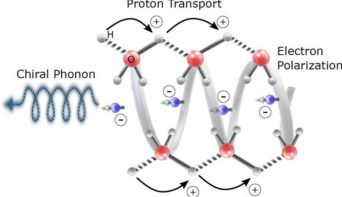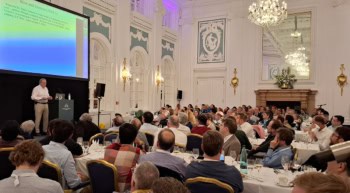As we approach the 100th anniversary of the discovery of quantum mechanics by Max Planck in December 1900, quantum theory still puzzles and appeals to physicists as much as it has ever done. The latest contribution to the debate is an unusual "hypothesis" article in this week's issue of Nature by Kurt Gottfried of Cornell University in the US and author of a well-known book on quantum mechanics. In the paper Gottfried imagines presenting James Clerk Maxwell with the Schrödinger equation and asking him to figure out what the wavefunction means (K Gottfried 2000 Nature 405 533).
There is no doubt that quantum theory has been remarkably successful and has passed every experimental test it has been subject to. But the interpretation of quantum theory – in particular the meaning of the wavefunction, the role of observers, and the question of what happens to the state of a system during a measurement – have remained a topic of debate and discussion among theoretical physicists and philosophers of science.
Gottfried writes that prior to quantum mechanics, physics was a cumulative pursuit in which new concepts such as thermodynamics and electrodynamics could be related to pre-existing notions such as space and time. Even the special and general theories of relativity can be understood in these terms, albeit with major conceptual innovations. Quantum mechanics, however, is different. “In retrospect,” writes Gottfried, “the successful developments of physics followed a clear conceptual path beginning in the Principia, but in 1925 [when Heisenberg discovered “matrix” mechanics] this path entered a no-man’s-land from which it has not yet emerged.”
The problem is that although the Schrödinger equation describes the time evolution of the wavefunction, the actual meaning of the wavefunction must be added as an extra axiom to quantum theory. In the orthodox statistical interpretation of quantum mechanics, the wavefunction contains the maximal knowledge that is available about the state of a system, and this wavefunction determines the probabilities that various results will be obtained when measurements are made on the dynamical variables of the system. Finally, it is not possible to assign values to these variables before the measurement is made.
Gottfried asks and then answers a rhetorical question: “Could Maxwell have figured out what the wavefunction means had he been handed Schrödinger’s equation? It would seem that Maxwell would have needed help from the wonder rabbis of Copenhagen and Göttingen.” Gottfried contrasts quantum theory with general relativity: in the latter “you do not need him [Einstein] whispering in your ear.”
Gottfried then imagines that he is Maxwell and armed only with the Schrödinger equation, the knowledge that it correctly describes all phenomena at the atomic scale (and in non-relativistic cases), and the value of the Planck constant, he tries to derive the familiar statistical interpretation of quantum mechanics. He makes some progress and discovers that, in the classical limit, the Schrödinger equation does not describe a single system “but a population of replicas of such a system moving along a set of trajectories.” Later Maxwell is told about the results of the Stern-Gerlach experiment – that is, that the magnetic moment or “spin” of an atom can only have discrete values – from which he derives something very close to the uncertainty principle.
In the end Maxwell is able to derive the statistical interpretation of quantum mechanics for discrete degrees of freedom, such as spin, but not for continuous degrees of freedom, such as position or momentum. “[However, the] portions of the quantum mechanical formalism that are being used in the arguments come in through the front door, and not so surreptitiously that even the author is confused about what is assumed and what is derived,” he writes, citing his own book on quantum mechanics.
Gottfried also claims that decoherence – put simply, the process by which a quantum system, which can be in two or more states at the same time, produces a classical probability distribution – occurs naturally and that “there is no need for an external environment not included in the Schrödinger equation, nor a pyramid of devices which make laboratory demonstration of coherence effective impossible.”
Gottfried wrote the article as a “belated” response to an article entitled “Against ‘measurement'” by the late John Bell that was published in Physics World in 1990. “I suspect that the extension of the argument to degrees of freedom with a continuous spectrum is not difficult,” Gottfried told PhysicsWeb, “but I have not figured out how to do that.”



